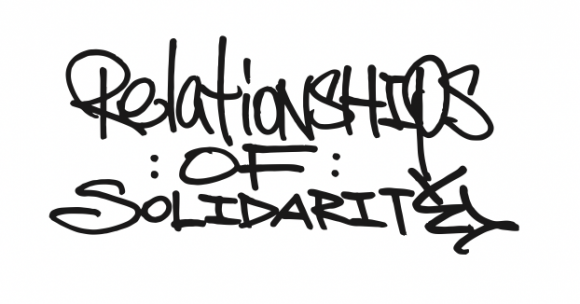
Some of the key issues that often correlate, coincide, or are caused by the elements of "Relationships of Solidarity" in a cooperative are as follows -
SOCIAL TRANSFORMATION
Many of the relationships of solidarity coopyouth have that are outlined in this section constitute connections and systems that would persist through the transformation of society beyond capitalism. Following, through solidarity relationships, cooperatives actively build the world they want here and now. Essentially, relationships of solidarity that adhere to the ethics of participation in cooperative systems and non-participation in exploitative systems; cooperatives also ensure their sustainability in the face of potential social, economic, and political changes. They do so by creating self-sufficient networks of people and groups that can support one another through those changes that are inevitable parts of social transformation, making strategic solidarity relationship building an imperative for the transition to and creation of a cooperative society.
CAPITAL
Given that conventional financiers typically discriminate against coopyouth because of their lack of credit history and collateral, as well as because they are employing an organizational model they deem illegitimate or too unfamiliar, solidarity relationships that circulate financial capital through the Cooperative Movement are of immense importance. The most powerful capital based solidarity relationships are, specifically, those redistributing wealth and actively correcting inequitable mechanisms of capitalism, as well as reparations to people and groups harmed in the past through various oppressive systems and practices. Coopyouth - and youth, in general - throughout the world categorically struggle to access sufficient capital to both survive, as well as to thrive through the creation of cooperative enterprises. The redistribution of wealth from older, wealthier cooperatives to youth is a key way to strengthen the Cooperative Movement overall and improve the lives of young people.
MEMBER TRANSITION
Youth and student cooperatives experience a higher degree of transience than most other cooperatives. Relationships that a given cooperative has with elders or other organizations often outlast the tenure of an average individual member. As a result, those relationships can be incredibly supportive in helping a cooperative retain institutional memory and organizational sustainability during the repeating cycles of membership transition. For example, an elder member serving in an advisory role can help newer members find important documents, recall pivotal conversations, or even connect a current member with a former member for a conversation. Additionally, relationships with like-minded or affinity institutions (e.g. school) and individuals can broaden and sustain a cooperative’s recruitment pool in order to ensure that there are sufficient members to replace those who transition out and sustain the cooperative.
